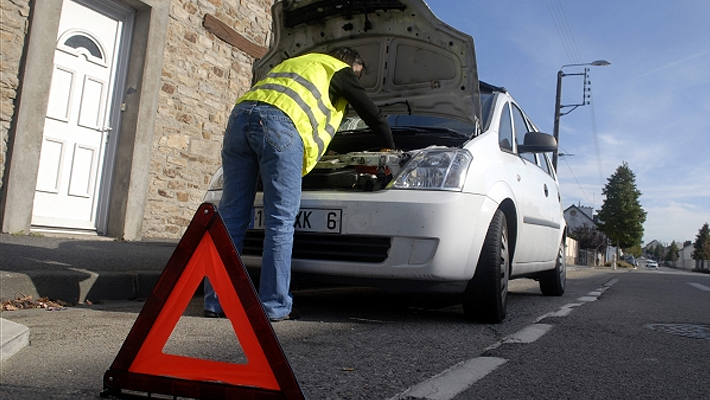Car safety is not just about car manufacturers. Drivers too must meet certain regulatory requirements. The Highway Code also requires some safety equipment. However, other elements, optional, can be very useful in case of breakdown or accident.
In recent years, the safety of cars has improved considerably. The builders have worked hard to make the vehicles safer. In particular, they have reinforced the passive safety elements: shock-absorbing bodywork, improved handling, airbags … And in fact, most safety equipment is supplied with the car (safety belt, spare wheel, etc.). However, this does not exempt the driver from getting additional items, some of which are even mandatory.
The pre-signaling triangle
Mandatory since 2008 in all vehicles, the pre-signaling triangle serves to make a stopped car more visible, in addition to the hazard warning lights. It is placed at least thirty meters before the place of the breakdown or accident, and must be visible at a hundred meters. This prevents other road users to avoid an accident. To be legal, the triangle must be marked “E 27R.”
The reflective vest
In the same way as the pre-signaling triangle, the reflective vest is mandatory since 2008. It is a fluorescent color vest (usually yellow or even orange), equipped with reflective strips (CE standard required). It is very useful, especially at night, to signal the presence of a pedestrian to other motorists. It is visible at 300 meters.
The hands-free kit
If you want to make a call while driving, you will need a hands-free kit. It is an earphone system that can be connected to the mobile phone, which allows keep your hands free as the name suggests. The hands-free kit is not mandatory, but remembers that it is forbidden to call the wheel without being equipped.
The baby seat
Again, not all vehicles need a baby seat, but you cannot carry a child under 10 without this equipment. Whatever the model, it must display the ECE R44 / 04 standards. There are different types, depending on the age and weight of the child. From birth up to 13 kilos, children travel back to the road in a semi-recumbent position. From 9 kilos or as soon as they sit well, they can travel facing the road, in a sitting position. The child seat models adapt to these specificities.
Other safety equipment
Apart from these regulatory devices, there are many more or less indispensable tools. They can be found very easily in the shelves of automotive specialists. They are also sometimes presented in the form of safety suitcases, emergency repair, emergency … It is particularly advisable to invest in a fire extinguisher (some countries have made it mandatory), multi-purpose powders type to fight all types of lights. You can also opt for a box of bulbs to repair immediately a defective fire. Some countries also recommend a first aid kit, in the event of an accident (consisting of dressings, compresses, physiological saline, antiseptic, flashlight, even survival blanket). Finally, an anti-puncture bomb can be very useful. In case of a puncture, it is enough to inject the rubber foam by the valve of the tube. There is no need to change the punctured wheel now, which can be very useful if you are in a dangerous parking place (motorway in particular).
Did you know?
After having made mandatory the presence of the high visibility vest and pre-signaling triangle in 2008, the Inter-ministerial Committee for Road Safety launched a major advertising campaign to raise awareness among French drivers. She starred the fashionable designer Karl Lagerfeld, who said, not without humor, that the reflective vest “it’s yellow, it’s ugly, it does not go with anything, but it can save your life.”
